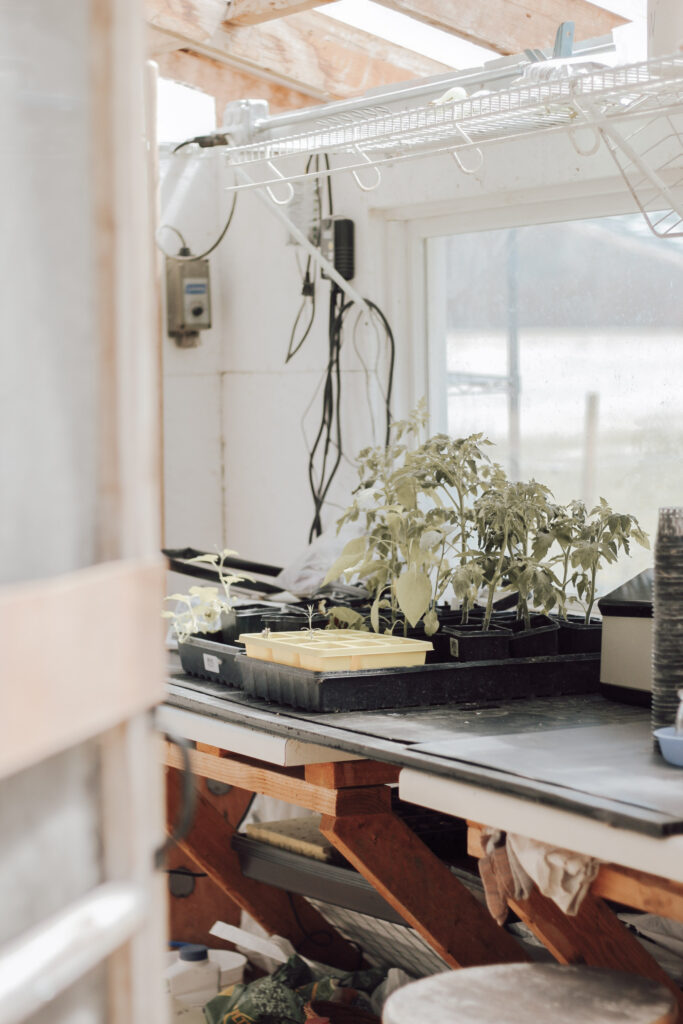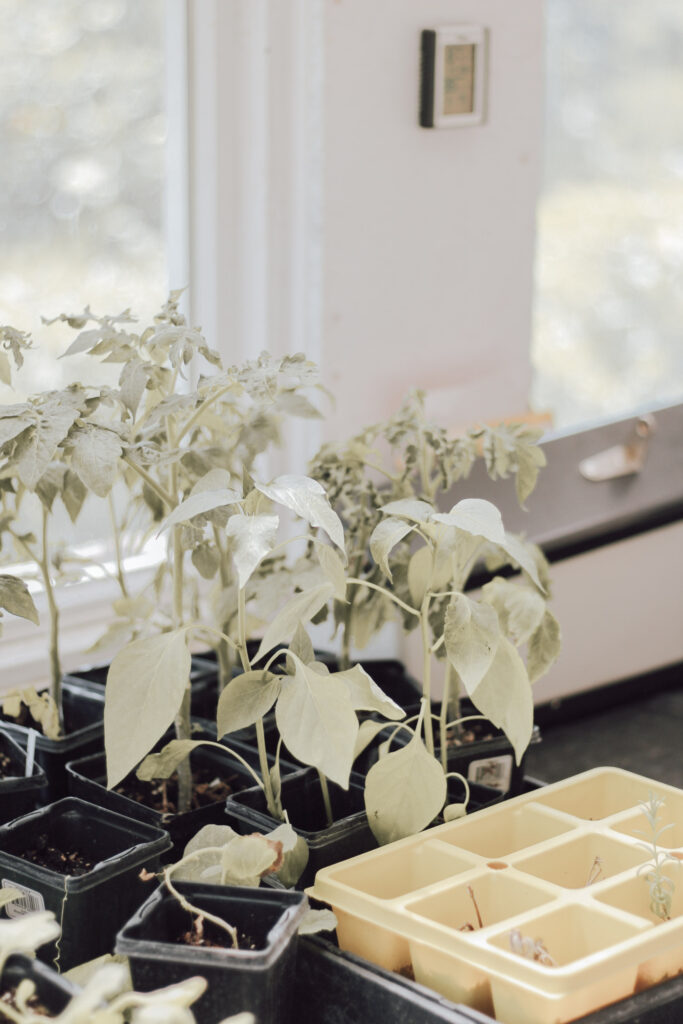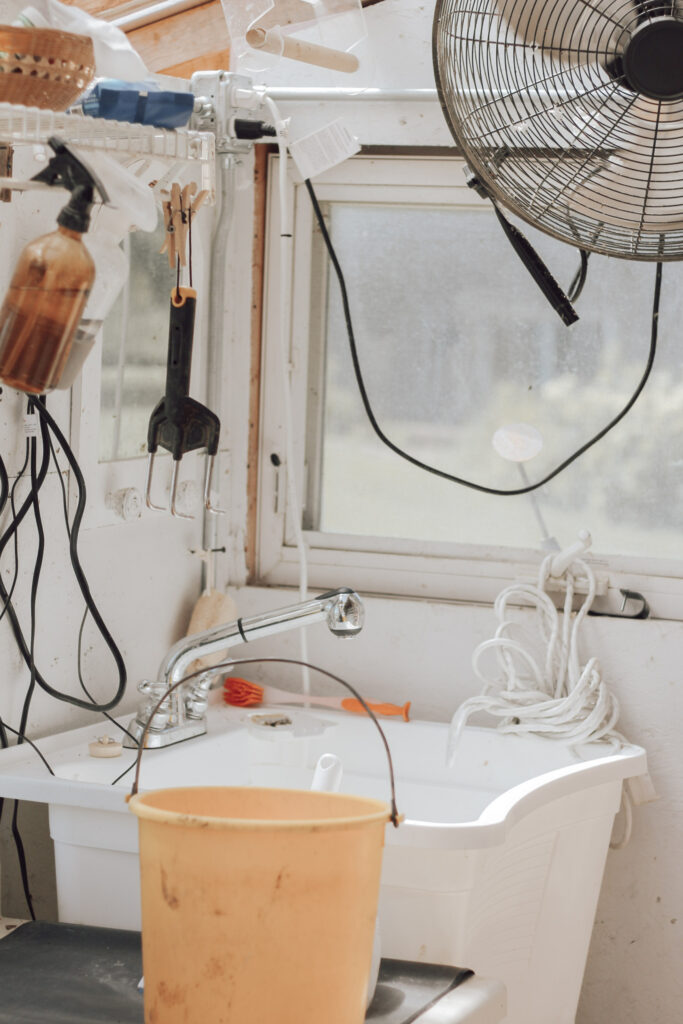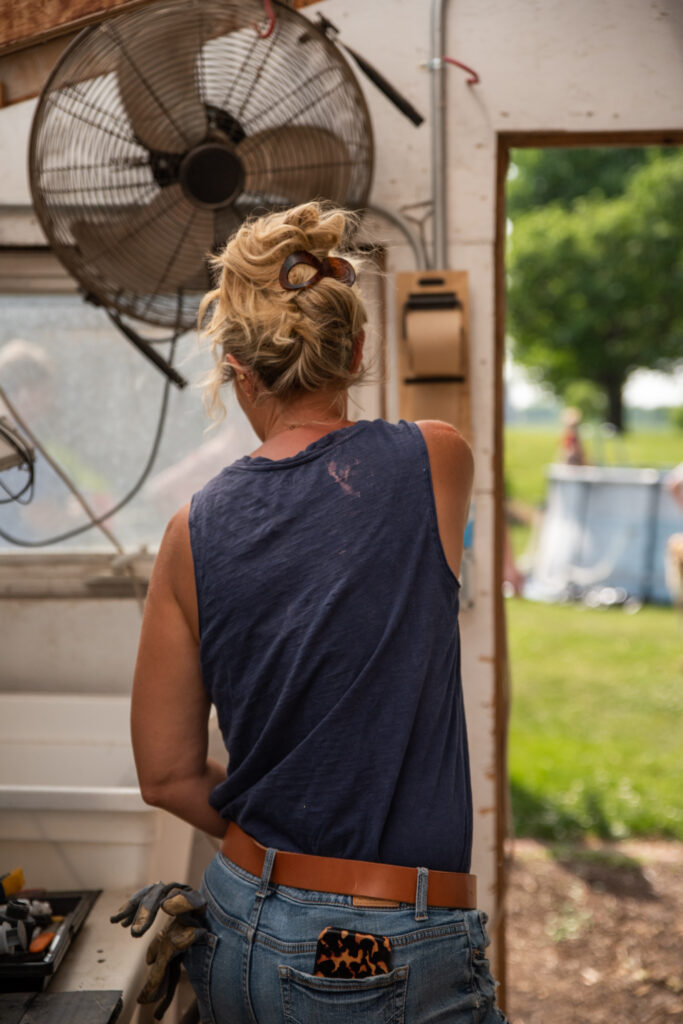Guide to correctly watering Greenhouse Plants for Successful Gardening
Allow me to guide you through what I have found to be the most successful practices for watering greenhouse plants to keep them healthy and growing!

“The grass is greener where you water it”
Here in Minnesota (agriculture zone 4b), having a greenhouse allows me to keep my seedlings growing safely through spring time – a time where it can be 75° one day and 45° the next (I don’t know a human or a plant that adapts well to this temperature shift!) The consistent protection and temperature control that a greenhouse provides is essential to prepare my garden for the warm summer days.
With all of the preparation that goes into greenhouse growing, I want to make sure that something as controllable as my watering schedule doesn’t affect the health of the plants. With a careful eye on your greenhouse plants, the solution for issues with your seedlings can be as easy as altering your watering schedule and keeping an eye on the weather forecast!
- Guide to Caring for your Greenhouse Plants
- How to be Proactive about Proper Watering
- Seasonal Watering Habits
- What have we grown in our Greenhouse?
- FAQs

Guide to Caring for your Greenhouse Plants
Greenhouses offer a controlled environment for plants, but even with this advantage, certain practices can impact plant health. One of these is watering during rainy or cloudy weather. While it might seem counterintuitive, there are important reasons to avoid watering your greenhouse plants under these conditions. Here are the main points you should be taking into consideration:
1. The Role of Sunlight in Watering
Sunlight plays a crucial role in plant health and growth which is why it’s ideal to water on sunny vs cloudy days. It helps in photosynthesis, the process by which plants convert light into energy. Additionally, sunlight helps in the evaporation of water from the soil through transpiration, maintaining a balance of moisture in the plant and its surroundings. By understanding the role of sunlight in watering and the risks of overwatering, you can ensure the optimal health and growth of your greenhouse plants.
2. Risks of Overwatering
Risks of overwatering is a common issue that can arise when watering plants during rainy or cloudy weather. When the soil is already moist from rain or high humidity, adding more water can lead to waterlogging. This deprives the roots of essential oxygen, leading to root rot and other fungal diseases.
3. Effects on Plant Health
Watering during rainy or cloudy weather can impact the overall health of your plants. Excess moisture in the soil can create a breeding ground for pests and diseases, compromising the vitality of your plants. Furthermore, plants may become more susceptible to nutrient deficiencies as waterlogged soil hinders the uptake of essential nutrients.
4. Soil Health
When you start with a great soil composition everything else falls into place. Healthy soil is just as important for the growth of your plants. Through soil blocking, I have been able to come up with a soil mixture of peat free soil/compost, wool, and cinnamon, and I wrote it all down for you here! Oh, and I have the best tools to use too!

How to be Proactive about Proper Watering
These couple of rules will help you successfully monitor the condition of your plants:
- Monitor the moisture level in the soil regularly: Using your senses is the cheapest and easiest way to do this. Simply stick your finger into the soil – Feels dry? It’s time to water. Feels cold/damp? Hold off. You can also get an idea just by observing the soil. If it appears light and dusty the soil is dry. If it looks darker and more clumped together the soil is moist. You get the idea!
- Water only when the soil is dry to the touch: Water when needed, not on a strict schedule. The weather conditions will affect how your plants are absorbing the water you have been giving them so be sure to check the dampness of the soil before watering.
- Consider using mulch to help retain soil moisture and reduce the frequency of watering.
- Look at your calendar and weather forecast: The weather forecast and taking into account where you are in the season are two guideposts you can use to tell you how often you should be checking up on your plants.
Seasonal Watering Habits
Spring
Spring is the time to get a jump on gardening season so our shelves are full of new seedlings. It’s still too cold to connect my water source to the greenhouse so I resort to hand watering: carry in 5 gallon buckets which I use to fill up my watering can with – also known as my pre-season training!
Summer
In the hot days of summer, when I will need to water more often, I enlist the help of a hose reel to get the job done. I just installed our hose reel from Vego Garden in 15 minutes! Utilizing efficient tools when watering ensures that I’m never too busy to get my plants the right amount of water. Outside of the greenhouse, I have installed a drip irrigation system for my raised beds. Both of these tools have helped my plants stay healthy!

What have we grown in our Greenhouse?
- Squash
- Tomatoes
- Luffa Gourds
- Zinnias
- Cress
- Poppies
- Feverfew
- Gomphrena
- Strawflower
- Scabiosa (aka pincushions)
- Bunny Grass
and this list goes on! The greenhouse is an ideal space to get a jump start on growing season: being able to start growing veggies, flowers, and grasses all in the same place is wonderful!
Questions People are asking about Greenhouse Watering
It’s best to assess the moisture level in the soil before watering. Stick your finger into the soil; if it feels moist, it’s advisable to hold off on watering until the weather clears up.
Wilting can be caused by various factors, including overwatering. Check the soil moisture level before watering. If the soil is already moist, wilting may be due to other issues such as pests, diseases, or nutrient deficiencies. Check out our favorite natural fertilizer: Bunny Tea.
Wilting leaves (can be accompanied by yellowing and browning of the leaves), root rot (dark brown or black roots), and moldy soil are the most common signs that your plant has been overwatered.
Pin this for later!

More Gardening Tips
How to Cut and Process Dahlias for a Long-lasting Vase Life
How to Make Homemade Flower Food
The Best Way to Keep your Garden Weed Free: Ruth Stout Method

Affiliate Disclosure & Content Disclaimer
This post may contain affiliate links from a paid sponsor, Amazon or other program. When you use these links to make a purchase I earn a small commission at no extra cost to you. This allows me to continue creating the content that you love. The content in this article is created for information only and based on my research and/or opinion.
Emily T.
DAILY INSPIRATION ON THE GRAM @hearty.sol
it's hip to be square!
View comments
+ Leave a comment